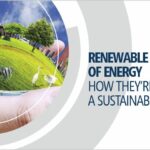Tech-Driven Solutions
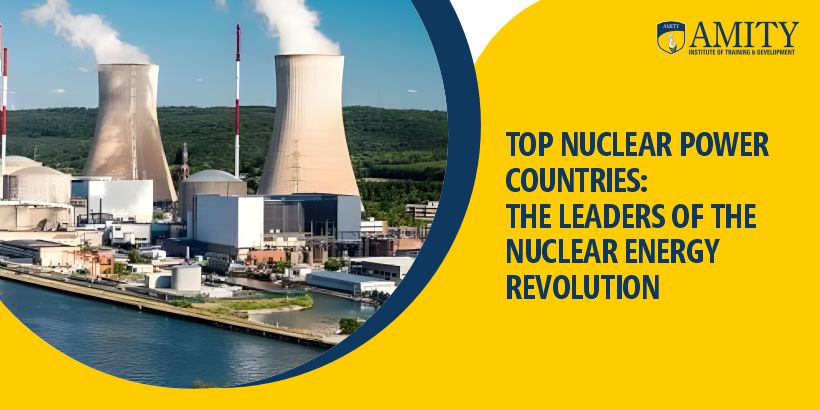
Nuclear power is energy from atomic nuclei. Atomic power plants use the division of atoms to produce heat. Heat, if it can be harnessed, can turn into steam that may be used to create electricity by turning turbines.
This method constitutes approximately 20% of electricity in the United States.It is also very necessary in countries like France that generate about 68 percent of electricity.
Nuclear Power Corporation of India tries hard to grow nuclear energy in the country. The more we are stretching out for green solutions, we will have to learn from it about nuclear energy -an immense part of the worldwide energy mix with over 400 reactors across the world.
This Blog guide will cover the way nuclear power plants work. We’ll look at their technology and their role in our energy world.
Key Takeaways
- Nuclear Power Generation An aspect of the global energy generation mix and, to that extent, carbon emission.
- Safety Procedures is the biggest concern for operation in nuclear plants.
- Training Needs Places such as AITD are imperative for training in this field.
- Global Impact: Now, the countries of the world are investing in nuclear tech for sustainable growth.
What is Nuclear Energy?
Nuclear energy develops from the nucleus of an atom, comprising protons and neutrons. It is produced by nuclear fission and nuclear fusion. It is released through nuclear fission and nuclear fusion. Most plants use fission, in which an atom is split, releasing a lot of energy as heat.

Did You Know? Nuclear power plants have supplied about 20 percent of annual U.S. electricity generation since 1990.
Understanding the Basics of Nuclear Power
During a nuclear fission reaction:
- One neutron collides with a uranium atom.
- The uranium breaks into smaller pieces during this process, releasing energy and neutrons.
- These neutrons proceed to release additional fission reactions, forming a chain.
This process is regulated in a nuclear power plant so that energy is constant for electricity.
How Does a Nuclear Power Plant Work?
It is through the fission energy that a nuclear power plant generates the steam. The steam can now move the turbines with which electricity is produced. Here’s how this process works:
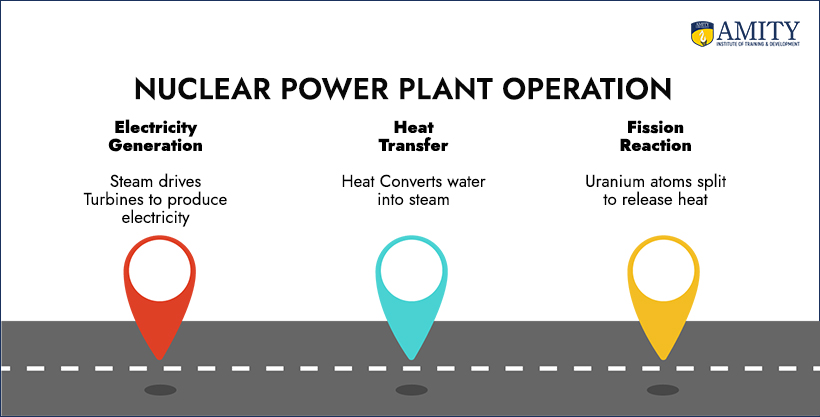
- Fission Reaction: Uranium atoms are split by neutrons in the reactor core and produce heat
- Heat Transfer: Heat turns water into steam
- Electricity Generation: Steam runs through the turbines, producing electricity.
DO YOU KNOW? One uranium fuel pellet holds as much energy as one ton of coal, 149 gallons of oil or 17,000 cubic feet of natural gas.
Nuclear Power Corporation of India: Leading the Charge in Nuclear Power Generation
In India, the Nuclear Power Corporation of India (NPCIL) plays a key role in growing nuclear power. It operates several nuclear power plants in India. NPCIL strives to increase clean energy in the national grid with safety and efficiency in mind.
DO YOU KNOW? As of 2023, there are over 400 commercial reactors worldwide.
Nuclear Power Stations of the World: Other Types of Nuclear Power
There are quite many reactors used in all the nations of the world. Still, two sorts of it are used commonly for power generation:

- Pressurised Water Reactor(PWR) : Such reactors maintain high-pressure water so that its boiling off is avoided and this steam drives turbines of which resultant is electricity.
- Boiling Water Reactors (BWR): In these reactors, the water boils directly in the reactor core, producing steam directly sent to turbines.
How Does Nuclear Energy Ensure Safety in Power Generation?
There is safety above all with nuclear power generation. Some of the modern reactors that have been developed have the following safety systems to be prevented from accidents and, most importantly, to have radiation in. For instance, numerous reactors are in large concrete domes that can tackle extreme conditions.
Additionally, strict rules and frequent checking ensure that safety regulations are followed in the best possible way.
Top Nuclear Power Countries: The Leaders of the Nuclear Energy Revolution
Leading countries in nuclear power generation are:
| Country | Nuclear Electricity Generation Capacity (Million Kilowatts) | Share of Total Electricity Generation |
| United States | 95.49 | 19% |
| France | 61.37 | 68% |
| China | 53.26 | 5% |
| Russia | 27.73 | 20% |
| South Korea | 24.43 | 26% |
(Source: International Energy Statistics)
These stats indicate the importance of nuclear energy in supplying electricity in most nations.
What Are the Environmental Impacts of Nuclear Power?
Nuclear energy is thought to be a cleaner source of energy than fossil fuel. However, it still has environmental effects that should not be ignored:
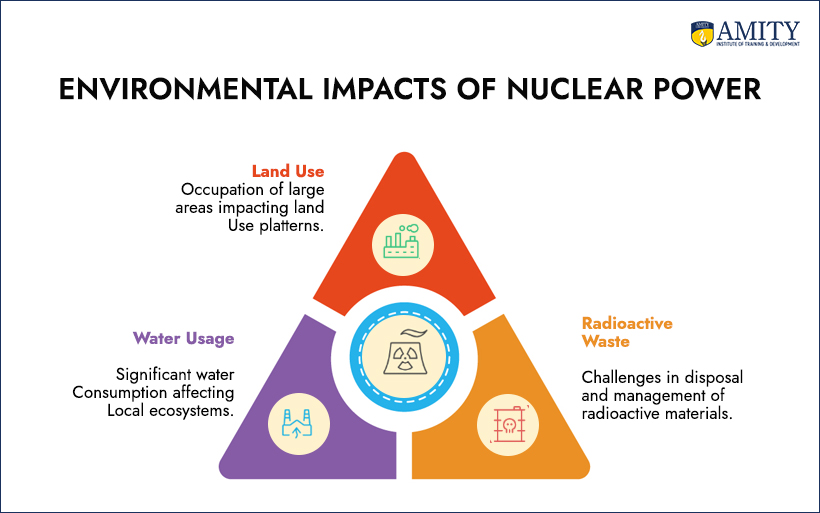
- Radioactive Waste: It is very hard for the industry to deal with radioactive waste.
- Water Usage: A lot of water is utilized by nuclear plants to cool off, hence affecting local ecosystems.
- Land Use: Nuclear facilities take much land, which has altered the way we use land.

DO YOU KNOW? Nuclear energy accounts for around 56% of America’s carbon-free electricity.
The awareness of Atomic power becomes key in a greener energy future. It allows energy to be produced while also lessening harm to the environment. Because of this, improved technology and safety steps have ensured that nuclear energy will always play a significant role in an energy mix.

“Nuclear Power Economics and Structuring,” by the World Nuclear Association. It delves quite deep into the economics of nuclear waste management. The ability to provide reliable low carbon electricity cuts carbon emissions as it does. In some places, new nuclear projects seem worthwhile, mitigating risk and providing investment strategies as well. It compares nuclear fusion energy with renewables and gas.
DO YOU KNOW? AITD course is internationally standardized, giving students the ability to serve anywhere in the world
How Can AITD Improve Your Knowledge Regarding Nuclear Power?
Amity Institute of Training and Development (AITD) is providing great resources and training opportunities. These may be utilized for better knowledge about nuclear core energy. Nuclear power plants have become essential nowadays; thus, the Amity Institute of Training and Development offers knowledge about its operations in India and how the Nuclear Power Corporation of India handles this sector.
AITD’s Commitment to Advancing Knowledge in Nuclear Power Countries

- Expert Advisory: AITD has had the best to your aid in understanding nuclear power generation and nuclear power station operations.
- Comprehensive Syllabus: The courses involve all the major topics like the latest in nuclear energy tech and safety.
- Industry Relevance: AITD’s curriculum keeps up with global nuclear driven energy trends.

DO YOU KNOW? AITD has more than 50 energy management courses, which include modules on nuclear engineering.
How Does AITD Support Your Learning Journey?
You can explore the following topics once you join AITD programs.
- How does a nuclear power plant work, from the steps of fission and producing energy to all other such processes
- What is the strategic importance of nuclear power plant especially for a country like India where Nuclear Power Corporation of India plays a very significant role in designing new reactors?
- How does nuclear fuel cycle fare compared with fossil fuel, with all its associated environmental benefits and challenges?
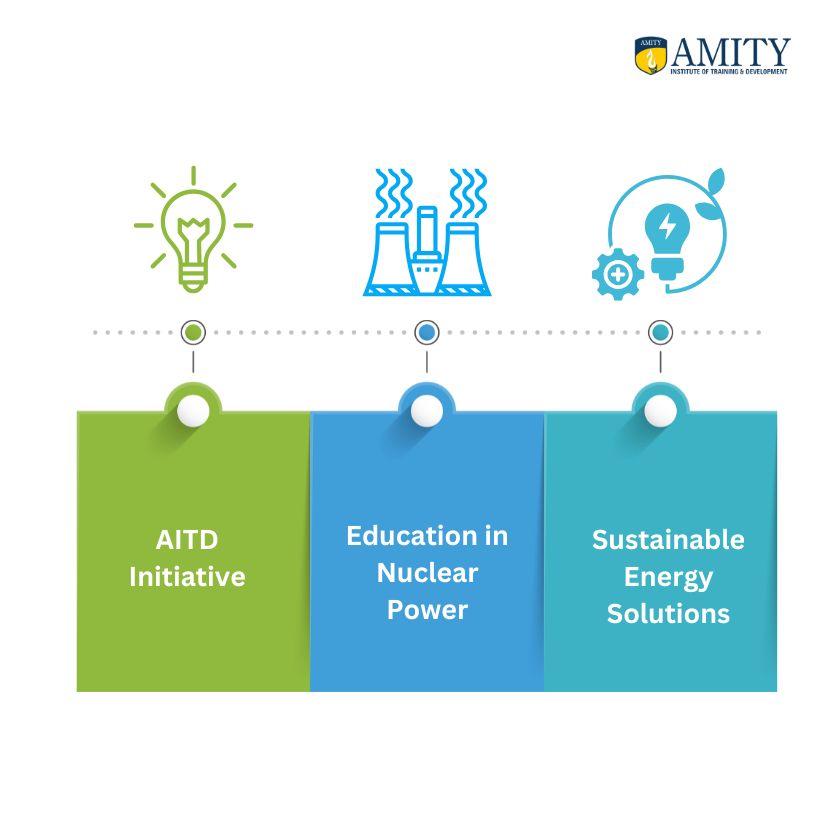
DO YOU KNOW?AITD is moving toward sustainable energy solutions with education for the next generation of Fission power leaders.
The Road to Sustainable Nuclear Power with AITD
The future of nuclear power looks optimistic, with probable growth and development in other countries including India. In such context, organizations such as AITD are promoting education and training, which will empower the enthusiasts to pursue their desired career within this field. Using atomic power as a renewable energy form will be important for confronting global energy problems and facilitating environmental stewardship.





